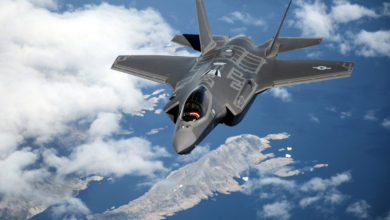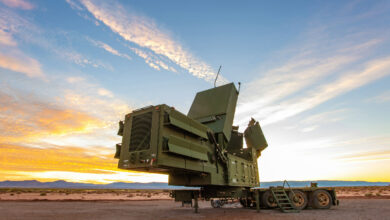Lockheed Martin on target with successful 240-km Precision Strike Missile test
The US is seeking longer-range artillery after withdrawing from INF missile treaty
Lockheed Martin successfully tested its next-generation missile for the U.S. Army’s Precision Strike Missile (PrSM) program, the company said.
“During the flight test, the PrSM was fired from Lockheed Martin’s High Mobility Artillery Rocket System (HIMARS) launcher and flew approximately 240 kilometers to the target area,” the Tuesday, December 10 release read.
The objectives included “confirming the missile’s flight trajectory performance, range and accuracy from launch to warhead event, validating all interfaces with the HIMARS launcher, as well as testing system software performance.”
Lockheed said all test objectives were achieved.
The testing was carried out at the U.S. Army’s White Sands Missile Range in New Mexico east of Las Cruces.
The PrSM is a surface-to-surface missile fired from the M270A1 Multiple Launch Rocket System (MLRS) and the M142 High Mobility Artillery Rocket System (HIMARS). Both are known as “shoot-and-scoot,” or more formally as “fire-and-displace” systems, which allow the launcher to relocate after firing to avoid counter-fire once detected.
Originally designed in the 1990s, the M142 HIMARS can mount on the Army’s standard 5-ton Family of Medium Tactical Vehicles (FMTV), currently manufactured by Oshkosh.
The PrSM program aims to develop systems with double the load-out of the Army’s older inventory of Advanced Tactical Missile System (ATACMS), with two missiles per pod. Some missiles under the PrSM program are set for ranges between more than 400 km, according to the U.S. Army.
Testing of PrSMs by Lockheed and Raytheon are ongoing at White Sands. The Army will then chose a winner and fielding of the weapon is expected by 2023.
The army is seeking to expand the range of its field artillery to beyond 500 km to compete with near-peer competitors Russia and China.
The U.S. Army refrained from developing artillery systems with ranges longer than 499 km under the Intermediate-Range Nuclear Forces Treaty, which banned launchers, cruise and ballistic missiles with ranges between 500 – 1000 km.
The Trump administration withdrew from the INF treaty in August after accusing Russia of violating the 1987 agreement. Moscow accused the U.S. of doing the same, although NATO disagreed.












